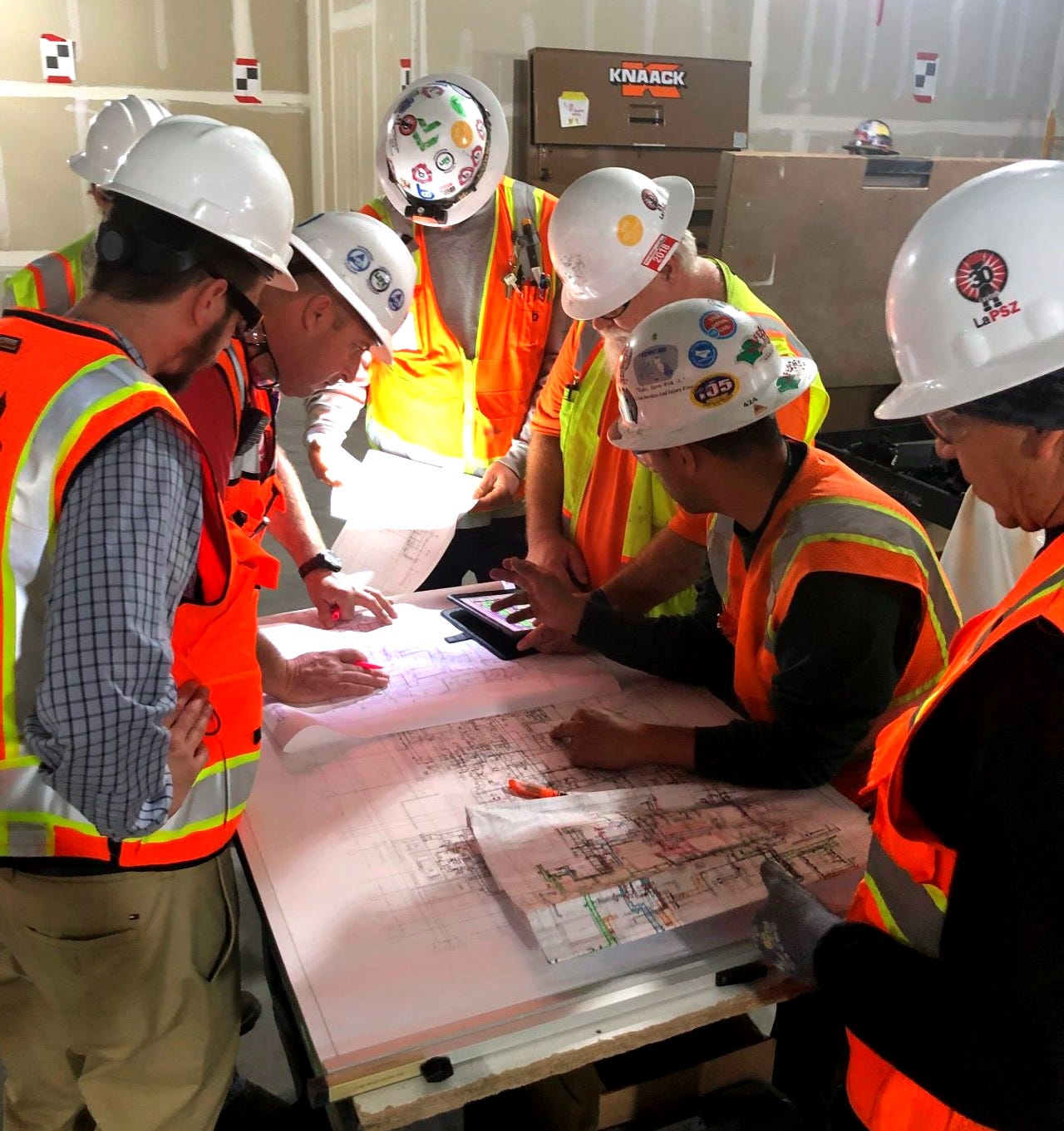👋 Hey, Kyle here! Welcome to The Influential Project Manager, a weekly newsletter covering the essentials of successful project leadership.
Today’s Overview:
Meetings are where ideas turn into action—where plans move from concept to reality.
But how do you make sure your meetings actually make an impact?
In this newsletter, I’m sharing proven steps and guidelines that have helped me lead more effective and impactful meetings in project management.
Automatic meeting minutes for architecture and construction projects - AI will help!
✅ Automatically draft minutes and action items from meetings to save hours every week.
✅ Summarize online and in-person meetings (e.g., on the job site) and export minutes directly into your template.
✅ Write progress reports or track key information like change orders across multiple past meetings.
✅ Cogram is secure. It’s SOC 2 Type II-certified, GDPR-compliant, and stores no audio or video recordings.
Using Cogram can change how you manage projects, so you can focus on what truly matters…
👉 Book a live demo (7-day free trial included).
💼 How to Become Your Company's Meeting Champion
Filed under: Project Management
We need to talk about meetings.
If you're anything like me, you've probably been in your fair share of bad meetings.
Why?
Meetings are held for the purpose of communicating - taking information from concept to design to the workers.
When you hear people complain about meetings, it is likely because they value their personal efficiency more than overall efficiency or the meeting was simply not run properly.
A well-run meeting should do the opposite. It should:
Energize
Motivate
Be fun & social
Solve problems
Optimize the whole
Give clarity & direction
Unfortunately, very few people know how to run a good meeting.
As a project leader, knowing how to run a great meeting is a shortcut to team performance, project success, and career opportunities.
Here's how you do it…
First, I have to get something off my chest.
There's no such thing as an update meeting.
Please, stop it.
You report in writing, so people can read it whenever works for them. It also allows you to fine-tune the message for different stakeholders.
With that out of the way, you should always know what the purpose of your meeting is. The key is to never mix purposes. Some examples:
Problem solving & brainstorming
Strategic thinking & planning
Decisions & alignment
Planning & traction
1:1 relationships
Switching halfway through from structured planning to free-form brainstorming is a recipe for disaster and confusion.
Step 1 - Purpose
Simon Sinek made millions with three words: “Start with why.”
Before you send an invite, you need to have a clear purpose and outcome in mind.
What do we want people to know or feel after it is done? What is is that you want to achieve with this meeting?
If the meeting has no purpose, cancel it. If you hold a meeting and the attendees aren’t prepared to present their information, then reschedule so everyone is prepared.
You must be aiming for an outcome. With that in mind, you can reverse-engineer the process.
Examples:
“I want people to know the exact steps to getting the ceilings closed up in Phase 2.”
“I want all of us to brainstorm on the root cause of this accident, so we can leave here knowing how this will never happen again.”
Step 2 - Prepare Beforehand
If you do the preparation well, half the job is done.
Be sure that the purpose of the meeting is clear to all who will attend and provide all attendees with an agenda that lists discussion points and who will present relevant information.
Having an agenda gives the leader of the meeting time to prepare to facilitate discussion and be aware of subjects that may invite off-topic comments.
A great agenda:
Clearly states what role each attendee has
Explains the purpose & objectives of the meeting
Provides necessary background information, data & context
Includes an agenda with time slots for each part of the meeting
Clear instructions on how to prepare, what to bring, and how to join.
Be prepared. Remember, the people in the room are there at a considerable sacrifice and cost to themselves and the company. Make every second worth their time.
Step 3 - Start & Hook Them
Third, hook them from the start of the meeting. Nail your opening. You must catch everyone’s interest and get their thoughts flowing within the first few minutes.
This is just like an email headline or a LinkedIn post. You have a very short window to reel people in, or they'll tap out, lean back, and wait until the meeting is over.
Create a moment that everyone in the room will remember:
Tell a joke
Play a video
A good question
State an interesting fact
A strong call to action
Get them energized and ready to tackle the topic at hand.
Once you start (on time!) take care of housekeeping. No phones/laptops, review the meeting purpose & agenda, and make sure everyone knows their contribution. If the meeting requires minutes, establish who takes them.
A quick note on meeting minutes: Thanks to Cogram, I’ve freed myself and my teams from the minutes-taking business. With today’s tech, everyone can do this. Cogram joins my meetings—online or in-person—and creates high-quality minutes and action items that I can export directly into our Word templates. Because the tool is specifically designed for construction and architecture, I found its minutes to be more comprehensive and customizable than Copilot’s.
Step 4 - Run Your Meeting
Once you've started, your role as facilitator is to orchestrate and keep their attention.
Stick to the agenda, and politely park off-topic items. Don't make sure that everyone speaks, make sure everyone feels heard. That means that even if people don't talk, you check in with them before moving on - often a nudge or eye contact is enough.
If necessary, remind people of their role & contribution, and encourage them to stay constructive. Slowly but surely, steer the conversation toward the outcome well ahead of time.
Before everyone runs out, quickly review the agenda and the outcomes. This is the moment for anyone to speak up! If there's consensus, agree on next steps and check if everyone is on board. Actions are useless if people don't feel ownership.
Step 5 - After the meeting is done
Within 24hrs after the meeting, write the shortest possible summary to all attendees including those who couldn't attend. This summary includes who was there, what was decided, and who does what, by when.
These summaries are often just a few bullets, no 6-page life stories, please.
With Cogram, you can skip this entire step as it does this for you automatically. It can even customize the summaries using your company’s or project’s template.
Last but not least, review if there were any off-topic items you parked during the meeting. If necessary, follow them up 1:1. This is also the moment to provide individual feedback on meeting contributions.
🏗️ On-site Meetings: A Story from the Field
On-site meetings are where plans turn into action. They’re crucial for planning the project, aligning the team for the upcoming week, huddling with the crew each morning, and getting everyone on the same page with pre-task plans.
Recently, I led a planning session for a rooftop MEP phase. It was a perfect example of how teamwork and the right tools can set the stage for success.
We began with a site walk to check the existing conditions and identify anything needed to "make the work ready." During the walk, we uncovered a few key issues. For instance, we found that some of the existing ductwork needed to be rerouted to avoid a conflict with the new piping. We also realized that a section of the roof was weaker than expected, which meant reinforcing it before we could install the new equipment. Catching these early prevented potential delays.
Throughout the site walk and trailer meeting, we used Cogram to capture every observation, action item, and decision. It worked quietly in the background, documenting the critical updates without pulling anyone out of the conversation.
One of the best features was how it integrated photos from the site walk directly into the meeting minutes. When we were discussing access needs to the elevator shaft, we took a quick photo, and it was automatically attached to the relevant note in the minutes.
By the end of the session, everything was organized and ready to share with the team. Plus, if someone only needed info on one specific issue—like the roof reinforcement—I could just extract that piece and send it directly to them.
This experience always reminds of the power of a well-run meeting. When you have a clear purpose, are well-prepared, and nothing slips through the cracks, everyone leaves the meeting aligned and energized.
Putting it all together.
One of the first signs of a project in trouble is a job that doesn’t have a regularly scheduled team meeting with people who show up on time, focused on an outcome, and ready to participate.
When someone says they are too busy to have a meeting, they are taking the easy way out and inconveniencing hundreds of other people.
Effective meetings can organize chaos into stability, build relationships and trust, and ensure everyone weighs in and buys in. This is how we build the culture of our projects.
We want to see as a group, know as a group, and act as a group.
If you want your meetings to run like clockwork, hang this above your screen:
Prepared material
Clear expectations
One meeting purpose
Groomed participants
Meetings run like a pro
Agreement on outcomes
Summarize, follow up & close
Until next week,
Kyle Nitchen
🧰 Kyle’s Toolbox
One of the top questions I get is: What tools do you use for X, Y, or Z?
A must-have for construction projects is a meeting minute tool.
In complex projects with many moving parts, it’s crucial to track all the details. Accurate meeting minutes ensure nothing slips through the cracks, and everyone knows their roles.
Why Cogram?
When it comes to security, Cogram stands out:
No AI Training: Customer data is never used to train AI models.
No Recordings Stored: Audio and video recordings are discarded after the meeting.
Custom Data Retention: Set timelines to automatically delete your data your transcript and notes. Custom hosting solutions are available.
Strong Security: Cogram is SOC 2 Type II certified and GDPR/HIPAA compliant.
Invest in tools that keep your project on track.

Whenever you're ready, there are 4 ways I can help you:
Upgrade your PM software. Experience the future operating system for construction and real estate development.
Get my full toolbox (free). Access 30+ software and hardware tools I'm using today.
Master scheduling. Elevate your skills as a scheduler, planner, and lean builder with the Takt Planning & Control online course. Use code "Influentialpmtakt" for 30% off.
Advertise in my newsletter. Put your brand in front of 3,700+ construction project managers, leaders, and execs. (Booked out 5 weeks)










